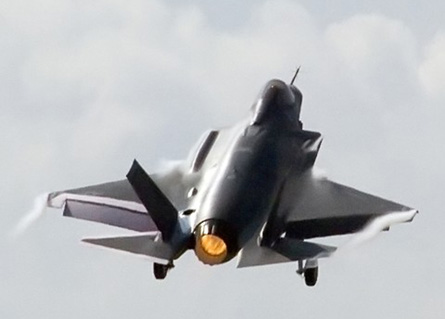As the US Department of Defense fights pressure to fund an alternative engine programme, estimated costs for the F-35 Joint Strike Fighter programme's baseline engine have jumped by nearly $2.8 billion.
A revised cost estimate last week showing a slight decline in overall lifecycle costs for the F-35 programme also reveals cost overrun for the Pratt & Whitney F135 propulsion system, which includes the Rolls-Royce shaft-driven lift-fan
Maj Gen Charles Davis, F-35 programme executive officer, also cited a 20% jump in estimated lift fan costs revealed in early negotiations with the P&W/R-R team for low-rate production contracts.
P&W attributes the extra costs on the lift-fan-powered short takeoff and vertical landing variant (STOVL) of the engine to a wide range of causes.
"Pressures impacting the cost of STOVL lift systems include an unfavourable foreign exchange rate, the cost of materials (global market influences) and configuration changes implemented for the benefit of the air system," the company says.
The cost increase does not include any funds for the alternative engine programme - the General Electric/R-R F136. The DoD this year is making its third attempt to overcome congressional resistance to terminate the $2.4 billion F136 development programme.
Both the F135 and F136 would use the R-R common lift-fan for the STOVL F-35B variant. A two-stage low-pressure turbine drives the lift fan, which generates a column of cool air providing 20,000lb (90kN) of vertical thrust.
Overall lifecycle costs for the JSF programme have declined by 0.3% to $299 billion. The reduction includes a $7.4 billion revised estimate for support costs and a nearly $2 billion drop for inflation estimates. Those declines helped to offset a nearly 27% increase in the average cost to acquire the F-35 and the nearly $2.8 billion rise in the propulsion system.
 |
|---|
Source: Flight International
















